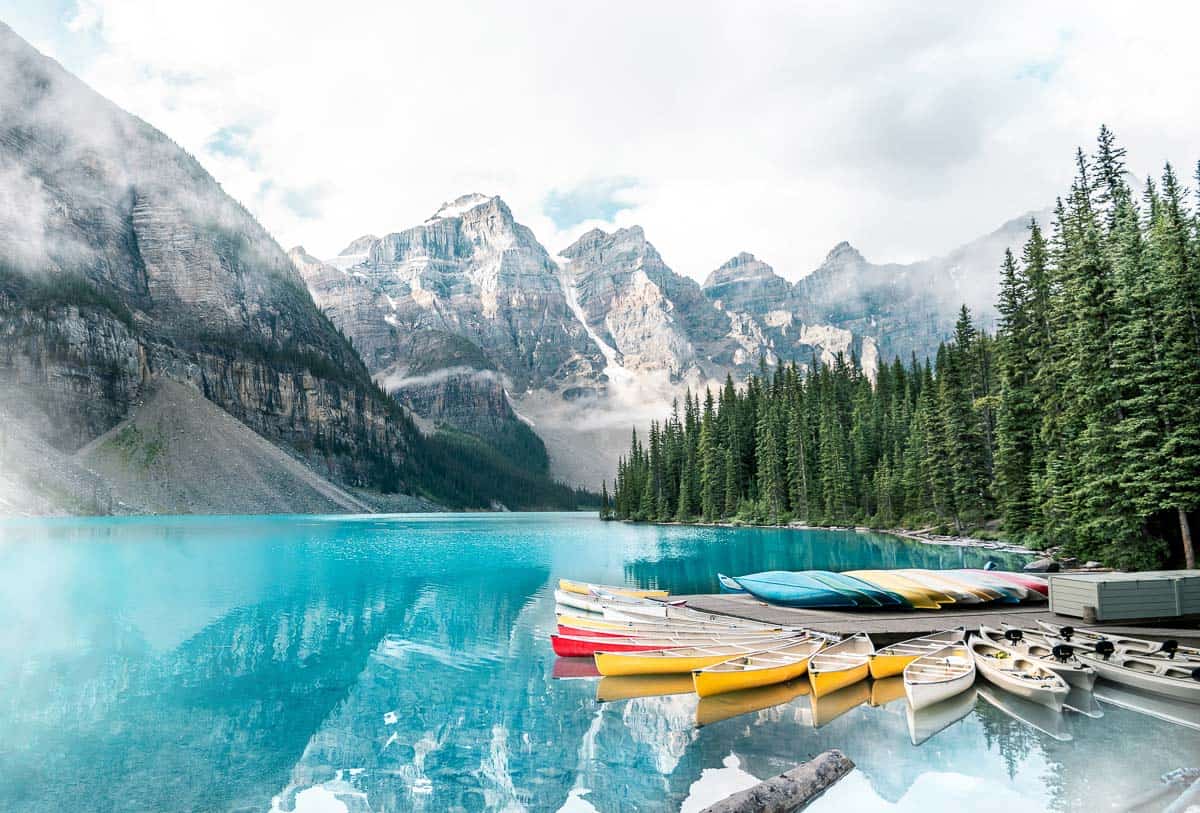Experience These 11 National Parks Around the World Before Climate Change Alters Them Forever

Climate change is one of the most pressing issues facing our planet today. One major consequence is the alteration of natural landscapes and ecosystems, including some of the most iconic national parks around the globe.
As temperatures continue to rise and extreme weather events become more frequent, these natural wonders face immense challenges. From melting glaciers to changing animal migration patterns, the effects of climate change on national parks are varied and far-reaching.
But while we work towards finding solutions to mitigate and adapt to the effects of climate change, there’s still time to experience these nine national parks before they are forever altered by this global crisis.
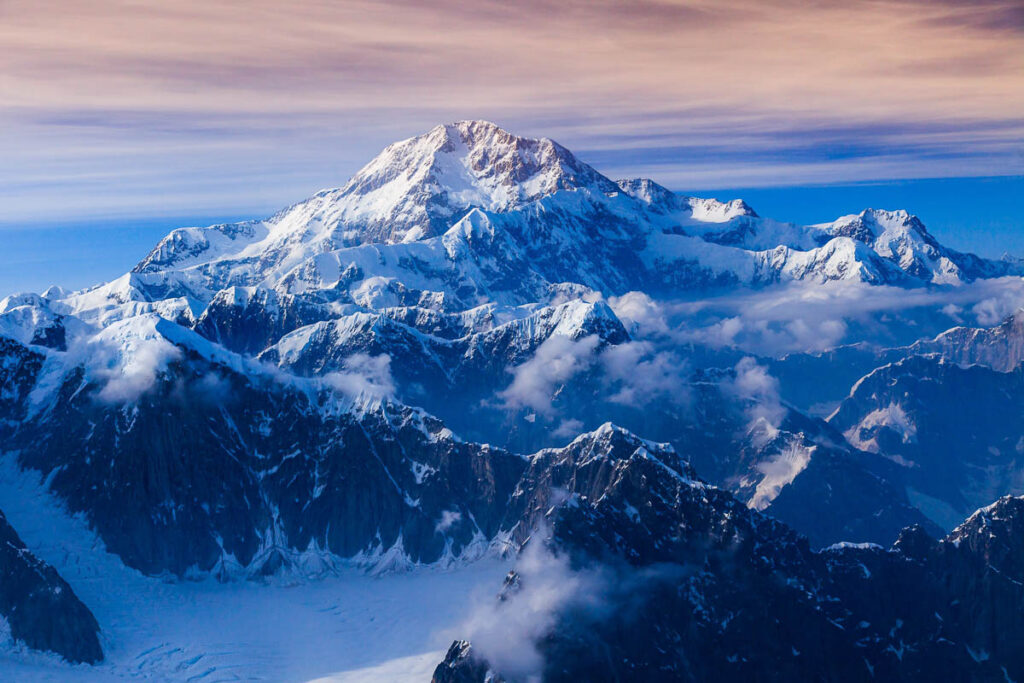
1. Denali National Park, Alaska, USA
- Why it’s famous: North America’s highest peak, Mount Denali (Mount McKinley)
- How climate change is affecting it: Rapid melting of glaciers
Denali National Park in Alaska is a vast wilderness with epic mountain landscapes and a final frontier for wildlife. However, the park’s glaciers are disappearing at an alarming rate due to rising temperatures. As these icy giants continue to melt, they affect the park’s ecosystem and can alter water flows that support plant and animal life.
When to go: June through August have the best weather for hiking and wildlife viewing.
What to do while there: Take an ATV tour through the park to spot bears, moose, and other wildlife. For the most adventurous travelers, hike to the top of Mount Denali, which requires some technical skills and a permit. Otherwise, you can hop on a scenic flight around the epic peak.
🏨 Where to Stay: Camp in one of the park’s designated campgrounds or explore all your hotel options here in Denali Park Village.
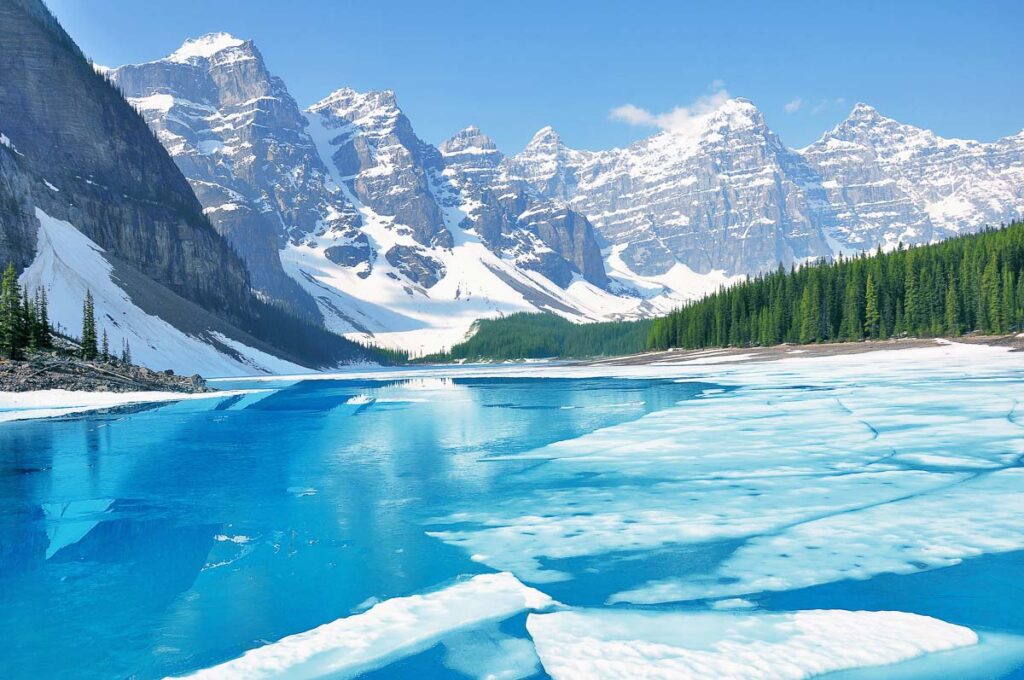
2. Banff National Park, Canada
- Why it’s famous: Canada’s first national park and the third oldest in the world
- How climate change is affecting it: Melting glaciers and changing animal habitats
Within the Canadian Rocky Mountains, you may have already seen images of Banff National Park’s alpine scenery and turquoise lakes on your social media scroll. But as temperatures continue to rise, the park’s glaciers are melting alarmingly. In fact, some experts predict that all of the park’s glaciers will disappear by 2050.
When to go: Banff National Park can be enjoyed year-round, but to avoid the crowds, come in the shoulder seasons, like spring or fall.
What to do while there: Hiking is a popular activity in Banff National Park, with endless trails to explore. For those drawn to the water, paddle across Lake Louise or Moraine Lake, their turquoise waters reflecting the towering mountains. Take a scenic drive along the Icefields Parkway for the best mountain views. Winter transforms Banff into a snowy wonderland for skiing at Sunshine Village or Lake Louise Ski Resort.
🏨 Where to stay: Explore all your hotel options here in Banff. Alternatively, stay in one of the park’s campgrounds.
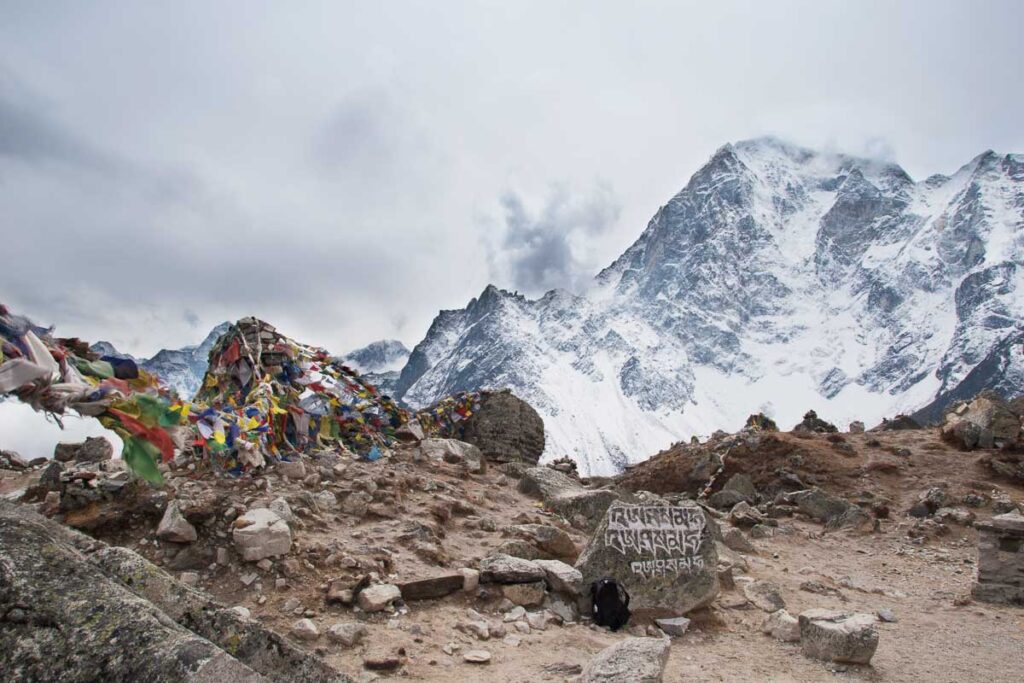
3. Sagarmatha National Park (Everest Region), Nepal
- Why it’s famous: Home to the world’s highest peak, Mount Everest
- How climate change is affecting it: Melting glaciers
Sagarmatha National Park in Nepal is a bucket list destination. After gearing up in Kathmandu, it took me 9 whole days of solid trekking to get to the top of just Everest Base Camp, and it’s an experience that will live with me forever.
But as temperatures rise, the park’s glaciers are rapidly melting, causing concerns for the future of this iconic landscape.
When to go: The best time to visit Sagarmatha National Park is between March and May or September and November when the weather is drier and more stable.
What to do while there: The main attraction in this park is undoubtedly Mount Everest. For experienced climbers, reaching the summit is the ultimate challenge. Trekking to Everest Base Camp or taking a helicopter tour over the park are popular options for those looking for a less strenuous adventure.
🏨 Where to stay: Accommodations consist mainly of tea houses and lodges along popular trekking routes. Explore all your hotel options for every day of the trek here.
Read Also: Adventurous Solo Travel Destinations Around the World, Ranked by Safety
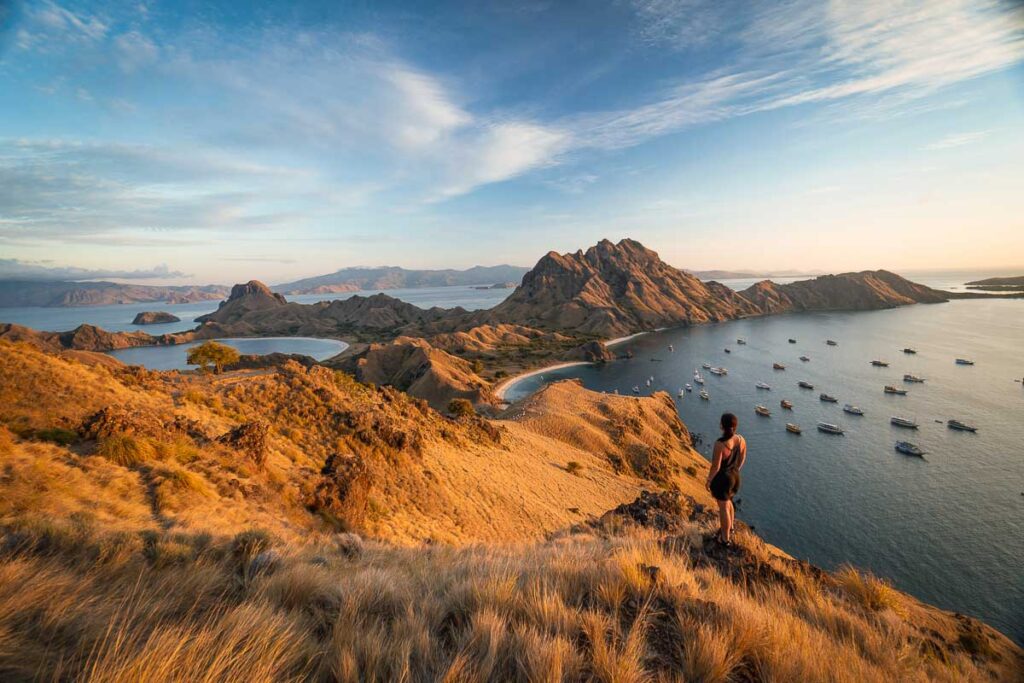
4. Komodo National Park, Indonesia
- Why it’s famous: Home to the Komodo dragon, the world’s largest lizard, and Padar Island (tri-colored beaches)
- How climate change is affecting it: Coral bleaching and ocean acidification
A Flores itinerary must, Komodo National Park in Indonesia is a UNESCO World Heritage Site and the only place in the world where you can see wild Komodo dragons. But beyond these ancient creatures, the park is also known for Padar Island, pink beaches, and some of the best coral reefs I’ve ever seen. However, with rising sea temperatures and increasing ocean acidity, the park’s coral reefs are at risk of bleaching and dying.
When to go: The best time to visit Komodo National Park is between April and December during the dry season.
What to do while there: Since it’s in a protected area, you must take a guided tour to spot Komodo dragons in their natural habitat on one of the park’s islands. There is everything from one-day to week-long itineraries that take you to a handful of beautiful Indonesian islands. Snorkeling and diving are popular activities in the park, where you can see sharks, drift dive, and even swing with the mantas.
🏨 Where to stay: There are no accommodation options in the park, but explore all your hotel options here in nearby Labuan Bajo. You can also sign up for a luxury liveaboard boat for a unique experience.
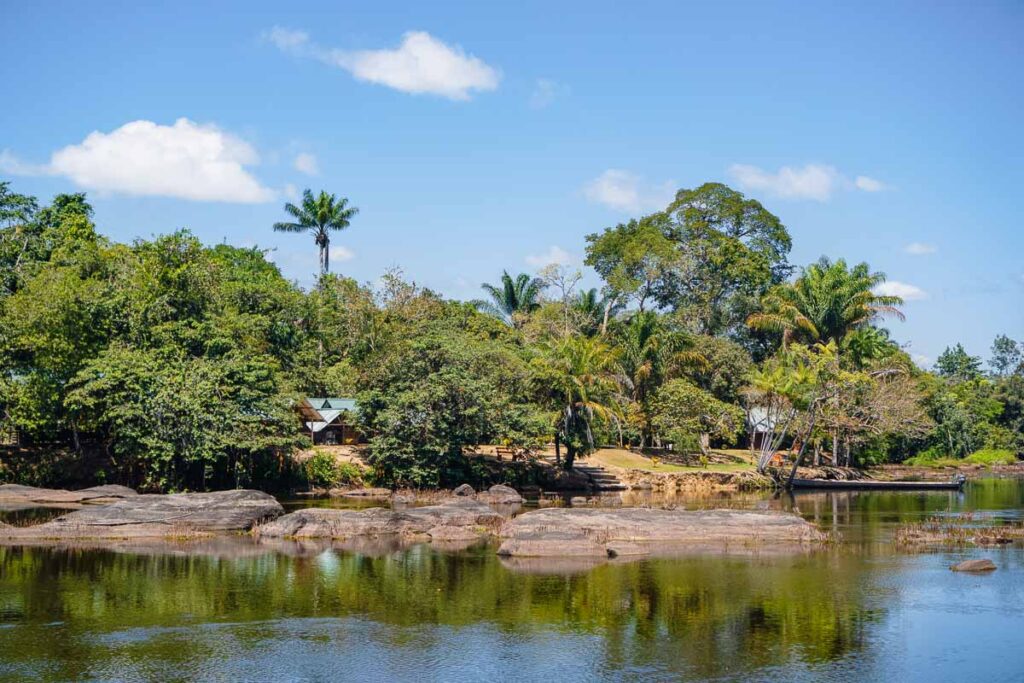
5. Amazon Rainforest, Brazil (part of several national parks):
- Why it’s famous: The world’s largest tropical rainforest
- How climate change is affecting it: Deforestation and loss of biodiversity
The Amazon Rainforest covers over 1.4 billion acres and spans nine countries. It’s also one of the most biodiverse regions on the planet, home to thousands of species of plants, animals, and indigenous communities. In recent decades, the Amazon has faced severe threats from deforestation due to agricultural expansion and illegal logging, farming, and mining.
When to go: The Amazon is a year-round destination, but the dry season from July to November is better for wildlife sightings and easier navigation through the forest.
What to do while there: Take a guided tour or river cruise through the rainforest to spot birds, monkeys, and other wildlife. Trips can be taken from any number of countries. I stayed at an indigenous eco-lodge at the edge of the Amazon in Ecuador and in the maroon villages in Suriname, but other famous starting points include Manaus in Brazil, Iquitos in Peru, and Leticia in Colombia. In Bolivia, you can even swim with pink dolphins.
🏨 Where to stay: Stay at one of many Amazon eco-lodges. Alternatively, you can cruise along the Amazon River, sometimes for weeks at a time.
Read Also: Best Hot Air Balloon Rides in the World For Your Bucket List
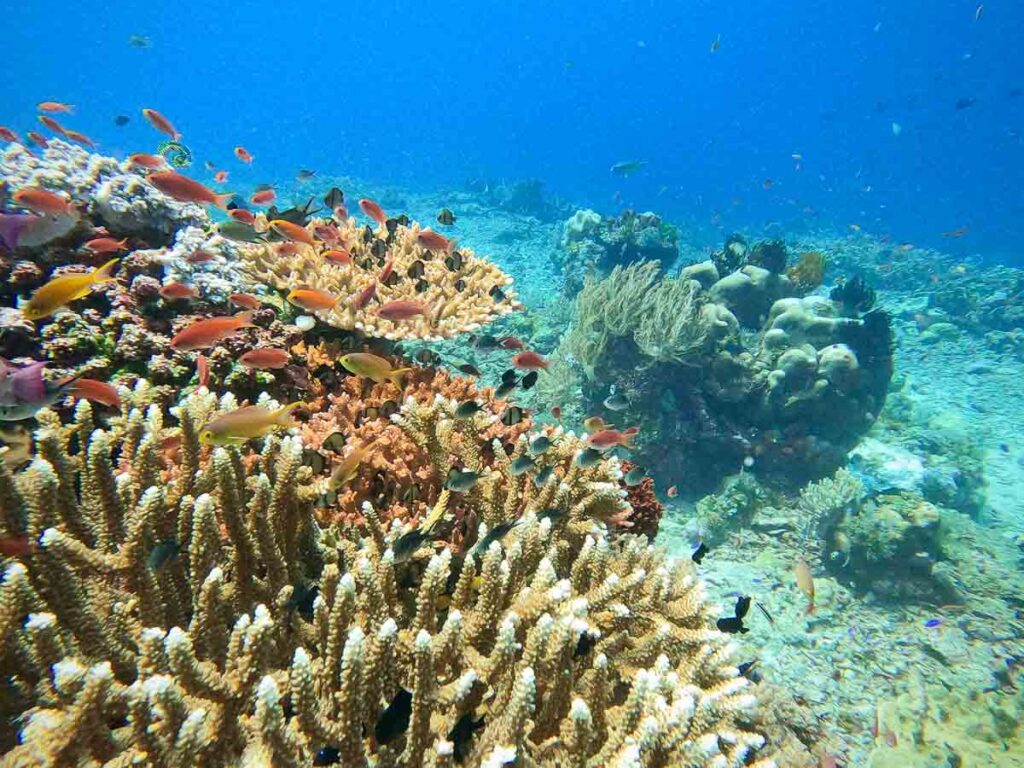
6. Coral Reef National Park, Thailand
- Why it’s famous: Beautiful coral reefs and marine life
- How climate change is affecting it: Coral bleaching and plastic pollution
Thailand’s Coral Reef National Park in the Andaman Sea is home to some of the world’s most colorful and diverse coral reefs. I even got my PADI license in Thailand, just like many others in the world. However, rising sea temperatures have caused coral bleaching, damaging these delicate ecosystems. Additionally, plastic pollution also threatens the park’s marine life.
When to go: The best time to visit Coral Reef National Park is between November and April when the weather is dry and the seas are calm.
What to do while there: Snorkeling and diving are the most famous activities in this Thai park. You can swim amongst colorful corals, tropical fish, and even sea turtles. Richelieu Rock is often hailed as one of the top dive sites in the world. Many boat tours from Phuket or Phi Phi take you to explore nearby islands and beaches. Some of the must-visit islands include the Similan Islands and Surin Islands, where you may even see the occasional whale shark.
🏨 Where to stay: The park has limited accommodation options, but explore all your hotel options here on nearby islands like Phuket or Phi Phi Island.
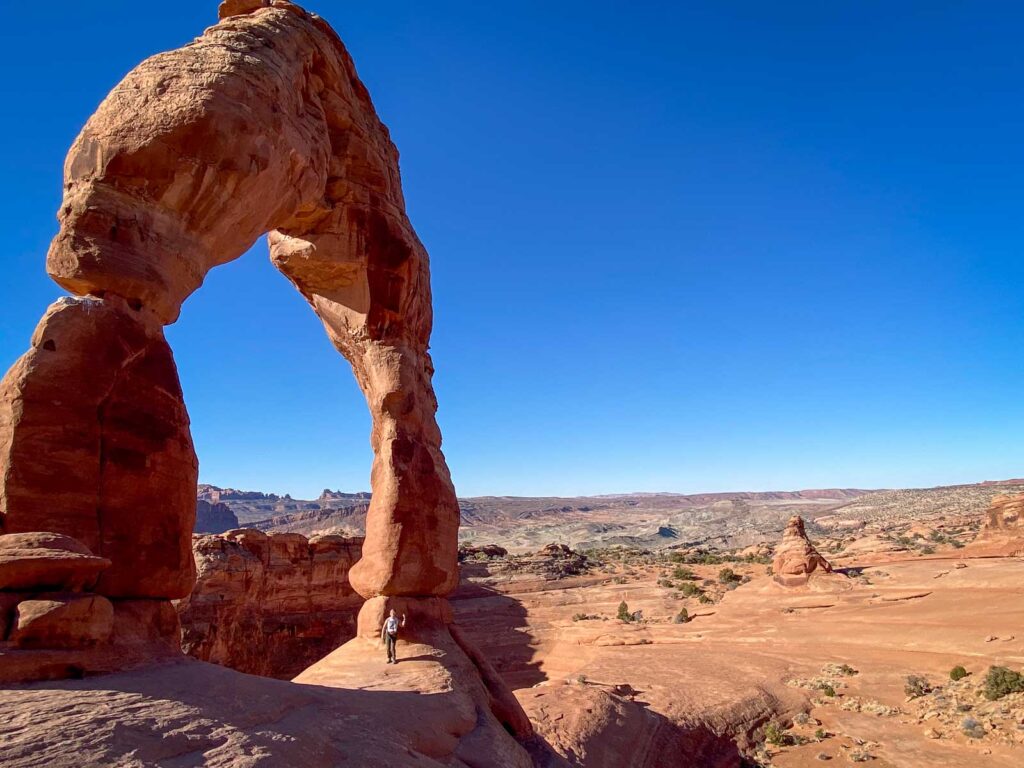
7. Arches National Park, USA
- Why it’s famous: Over 2000 sandstone arches
- How climate change is affecting it: Erosion and increased visitation
Arches National Park in Utah, USA, is a spectacular landscape of red rocks and natural sandstone arches. It’s one of the most visited national parks in the US, with over 1.5 million visitors each year, and one of my personal favorites.
With increased visitor numbers, the park’s delicate rock formations face accelerated erosion and damage from foot traffic and vandalism. Climate change is also causing extreme weather events like flash floods that erode the arches. In 2022, the park actually started to limit the number of daily visitors to manage the overcrowding issues and preserve the fragile ecosystem.
When to go: The best time to visit Arches National Park is between March and October when the weather is warmer, but be prepared for crowds during peak season.
What to do while there: The park is not big, so do a scenic drive or take a 4×4 excursion through the entirety of the park, stopping to hike places to places like Delicate Arch, Double Arch, and Landscape Arch. Marvel at Balanced Rock and watch a sunset through the Windows Section. If you can reserve a permit, take a guided tour through the maze of Fiery Furnace.
🏨 Where to stay: There is one campground in the park with limited spaces, so it’s best to book in advance. Alternatively, explore all your hotel options here in nearby Moab.
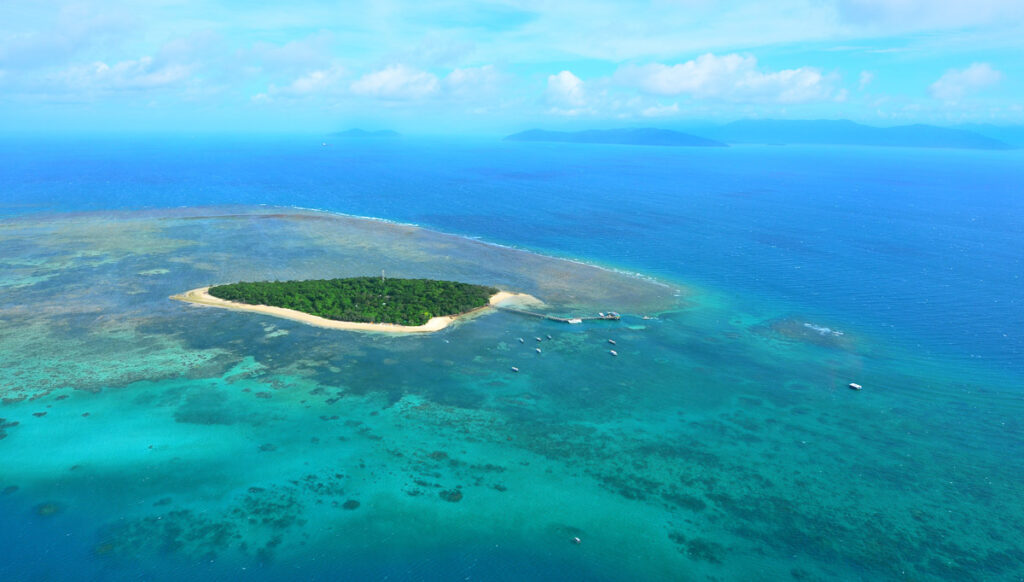
8. Great Barrier Reef National Park, Australia
- Why it’s famous: The world’s largest coral reef system
- How climate change is affecting it: Widespread coral bleaching
Located off the coast of Australia, the Great Barrier Reef is an unparalleled destination for snorkelers and scuba divers. However, this diverse ecosystem faces major challenges with rising water temperatures and increased ocean acidification. Widespread coral bleaching events have already been observed, causing irreparable damage to the vibrant colors and intricate structures of the reef.
When to go: The best time to visit the Great Barrier Reef is between June and October. During these months, the weather is cooler, and the water is clearer with the best underwater visibility. Plus, you’ll avoid the jellyfish season that runs from November to May.
What to do while there: Apart from the must-do activities of snorkeling and scuba diving to swim in giant schools of sea life above coral, consider taking a glass-bottom boat tour for a different perspective of the reef. For those who want to keep their feet dry, fly up on a sightseeing flight to get breathtaking aerial views of the reef. Additionally, visit some of the islands that are part of the Great Barrier Reef Marine Park to engage in wildlife viewing, hiking, and experiencing indigenous Australian cultures.
🏨 Where to Stay: Stay on one of the islands within the Great Barrier Reef Marine Park, such as Hamilton Island or Lady Elliot Island. Alternatively, explore all your hotel options here on the mainland in Cairns.

9. Torres Del Paine National Park, Chile
- Why it’s famous: Granite towers and Glaciers
- How climate change is affecting it: Melting glaciers
Torres Del Paine National Park in Chile is one of the final pit stops before you hit Antarctica. It boasts some of the most breathtaking landscapes in South America, with towering granite peaks, electric-blue glaciers, and pristine lakes. But as temperatures rise, the park’s glaciers are melting at an alarming rate.
When to go: The best time to visit Torres Del Paine National Park is between December and February during the summer months in the Southern Hemisphere.
What to do while there: Hiking and trekking are popular activities in the park. Tackle the entirety of the famous W Circuit for mind-blowing views of mountain landscapes, glaciers, and lakes. Take a boat tour or even a kayak to get up close to Grey Glacier, a massive ice formation. Salto Grande, a powerful waterfall that connects two glacial lakes, is also worth a visit.
🏨 Where to stay: If you’re planning on hiking or trekking, there are several campsites and refugios (mountain huts) within the park. Otherwise, explore all your hotel options here in nearby towns like Puerto Natales or Punta Arenas.
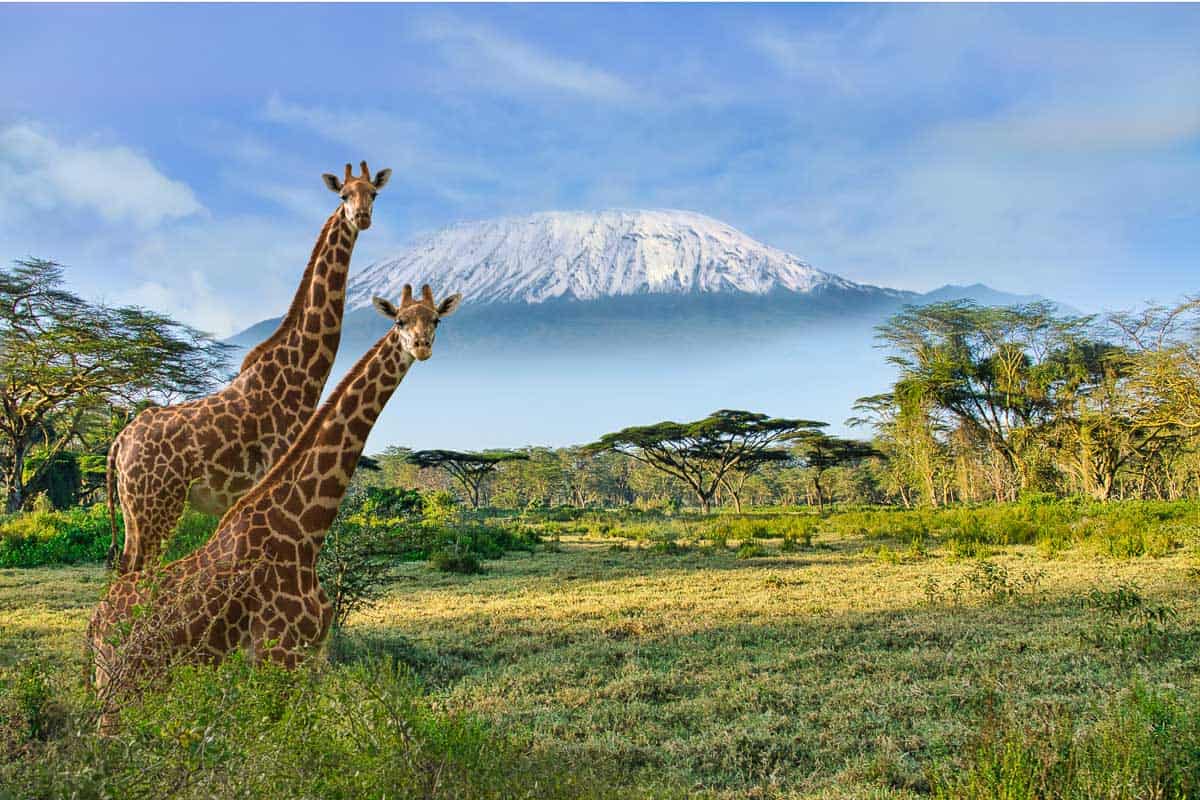
10. Kilimanjaro National Park, Tanzania
- Why it’s famous: Mount Kilimanjaro, Africa’s highest peak
- How climate change is affecting it: Receding glaciers
Kilimanjaro National Park in Tanzania is home to Mount Kilimanjaro, Africa’s highest peak. The mountain and its surrounding rainforest are a UNESCO World Heritage Site, attracting hikers and climbers from all around the world. It’s one of the hardest hikes I’ve ever done and the tallest peak I’ve accomplished thus far.
However, rising temperatures and changing weather patterns are causing the glaciers on the mountain to recede at an alarming rate, resulting in the loss of crucial water sources for surrounding communities and wildlife.
When to go: The best time to visit Kilimanjaro National Park is during the dry season from June to October.
What to do while there: The main activity in Kilimanjaro National Park is, of course, hiking up the famous mountain. Summiting Mount Kilimanjaro is an adventure of a lifetime, with several routes available. The Marangu Route is the most popular and straightforward. For a bit more challenge, hiking the Machame Route has a higher success rate but involves camping. This is the one I did. The Lemosho and Rongai routes are less crowded alternatives but much more difficult.
🏨 Where to stay: For most routes, you will have a guide and porter team with you who will help you with food, setting up, and carrying your camping gear.
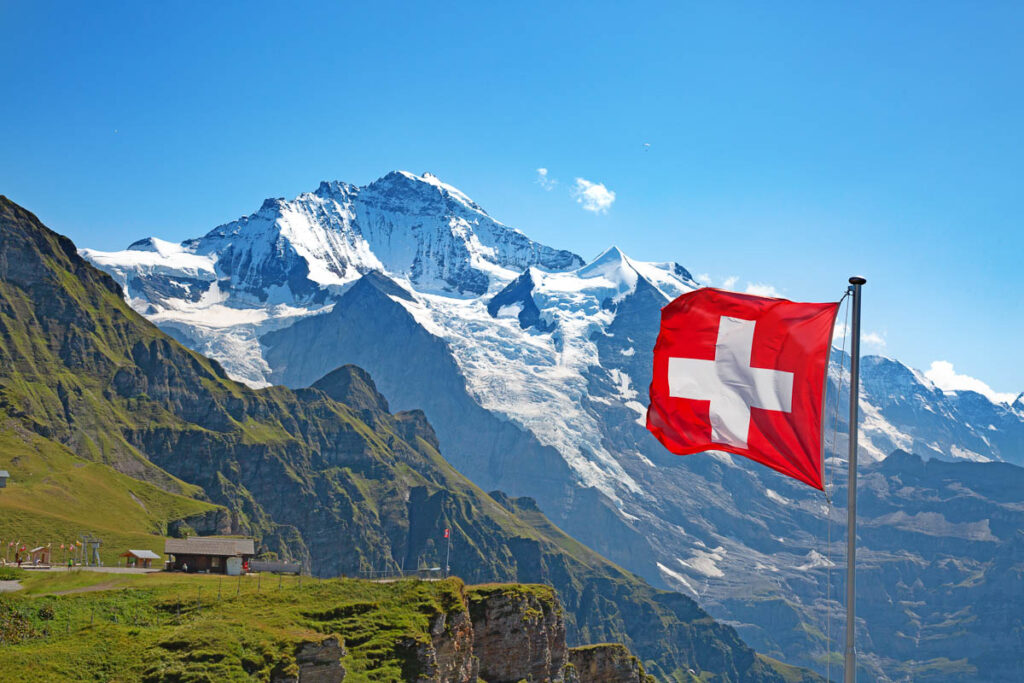
11. Swiss Alps Jungfrau-Aletsch, Switzerland
- Why it’s famous: Mountain vistas and alpine villages
- How climate change is affecting it: Retreating glaciers
So far, Europe hasn’t really made the list yet, but they are not entirely unscathed either. Multiple French friends of mine have already said that the ski resorts in the lower Alps no longer have a reliable ski season.
One standout destination on the continent is the Swiss Alps Jungfrau-Aletsch region. Although not exactly a national park, the region has been designated a UNESCO World Heritage Site. It’s home to the largest glacier in Eurasia, Aletsch Glacier, as well as quaint alpine mountain towns and jaw-dropping mountain vistas. Like many others on this list, this glacier and others in the region are currently significantly receding.
When to go: The best time to visit the Swiss Alps Jungfrau-Aletsch is during the summer months from June to September.
What to do while there: Hiking and outdoor activities are a must in this area. Apart from admiring the mountain vistas and rustic alpine villages, visitors can hike all around or take a cable car up to the Aletsch Glacier, the largest glacier in the Alps. The Jungfraujoch train ride is another must-do, taking you through the heart of the Swiss Alps and up to Europe’s highest railway station.
🏨 Where to stay: Explore all your hotel and chalet options in towns like Grindelwald, Wengen, and Murren. Alternatively, you can stay in one of the many mountain huts located throughout the region.
Final Thoughts: Climate Change in National Parks
These 11 national parks highlight the impact that climate change is having on some of the world’s most famous natural wonders. It’s a bit sobering to see the places we love and perhaps have only seen in photos or dreams facing such precarious futures.
But it’s not all doom and gloom; there are still ways to appreciate and experience these destinations while minimizing our impact. We can all play a part in preserving them for future generations to enjoy. As travelers, let’s leave no trace.
| TRAVEL RESOURCES |
| ✈️ Find the best tours and activities with Viator to cross off your bucket list and create unforgettable memories 🏘️ Book your accommodation with Booking.com in advance and check availability on the days of your travels. 🧾 Rent a car in advance with Discovercars for those epic road trips at the best price. |
Catherine Xu is the founder and author of Nomadicated, an adventure travel blog that helps travelers cross off their bucket list. Since discovering traveling in 2015, she has lived and journeyed to 65 countries across 5 continents and vanlifed the west coast USA for 2+ years. These days, she splits her time in Southeast Asia and California while sharing her travel stories and resources based on first-hand experiences. Catherine's other works has been referenced in major publications like MSN, Self, and TripSavvy.

